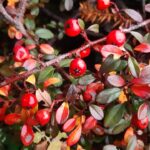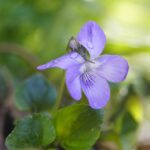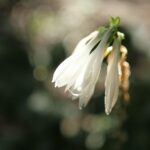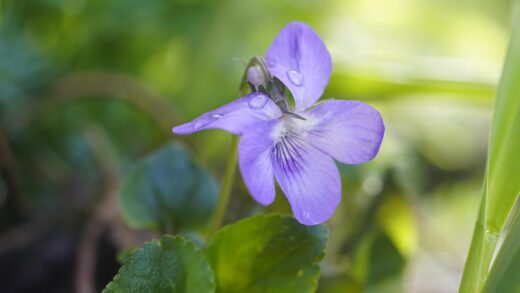The practices of pruning and cutting back Geum coccineum are essential horticultural tasks that go far beyond simple tidiness; they are strategic interventions that directly influence the plant’s health, appearance, and, most notably, its flowering performance. Unlike complex pruning required for shrubs or trees, the maintenance of this perennial is straightforward, focusing primarily on the removal of spent flowers and old foliage at specific times of the year. Mastering these simple techniques will reward the gardener with a plant that not only blooms for a longer period but also maintains a more vigorous and disease-resistant habit from one season to the next.
The primary pruning activity during the growing season is known as deadheading. This is the simple act of removing the flowers from the plant once they have faded and started to wilt. The main purpose of deadheading is to prevent the plant from setting seed. By removing the spent blooms, you interrupt the plant’s reproductive cycle, which in turn stimulates it to produce more flowers in an effort to complete its goal of creating seeds. This simple task can significantly extend the blooming period, often encouraging a second, albeit smaller, flush of flowers later in the season.
Beyond promoting more blooms, deadheading also improves the overall appearance of the plant. A clump of scarlet avens dotted with brown, shrivelled seed heads looks tired and untidy. Regularly removing these spent flowers keeps the plant looking fresh, clean, and vibrant, ensuring that the focus remains on the beautiful new blossoms and the lush green foliage. This ongoing grooming process is a small effort that pays large dividends in the aesthetic appeal of your garden borders.
Finally, deadheading directs the plant’s energy towards more beneficial activities than seed production. Once a plant flowers, a huge amount of its energy resources are channeled into developing and ripening seeds. By preventing this process, you allow the plant to divert that energy into strengthening its root system and developing more leaves and vegetative growth. This results in a stronger, healthier, and more robust plant that is better prepared to survive the winter and put on an even more impressive display the following year.
The technique of deadheading
The process of deadheading scarlet avens is simple and can be done quickly as part of your regular garden walk-through. The key is to be consistent, aiming to remove the spent flowers every few days during the peak blooming period. For tools, a sharp pair of small scissors, floral snips, or secateurs is ideal for making clean cuts. While you can pinch the spent flowers off with your fingers, using a tool prevents tearing the stem and results in a tidier look.
When removing a faded flower, it is important to know where to make the cut. Do not just snip off the individual flower head itself. For the best results, trace the slender stem of the spent flower all the way back down to the point where it emerges from the main clump of basal foliage. Make your cut at the base of this stem. This removes the entire unsightly flower stalk and encourages new growth, including new flower stems, to emerge from the crown of the plant.
During the deadheading process, take the opportunity to inspect the plant for any other issues. This is a good time to look for any leaves that are yellowing, damaged, or showing signs of disease. Prune these off at the same time. This minor tidying, often referred to as “sanitizing” the plant, not only improves its appearance but also helps to prevent the spread of potential pathogens by removing infected tissue from the garden.
Be careful not to confuse developing flower buds with spent flowers that are closing up. The buds are typically plump and firm, pointing upwards, while spent flowers will look wilted, often with drooping petals and a developing seed head in the center. With a little practice, you will easily be able to distinguish between the two, ensuring you are only removing what is necessary and leaving the future blooms to develop and open. This careful attention maximizes the floral display.
Tidying foliage during the season
Throughout the spring and summer, the basal foliage of Geum coccineum can occasionally become a bit untidy. The older, outer leaves may naturally start to yellow and die back as the plant puts its energy into new growth and flowers. Additionally, leaves can become damaged by weather, pests, or minor mechanical injury. Periodically removing this tired-looking foliage is a simple grooming task that keeps the plant looking its best.
Using your fingers or a pair of clean snips, reach into the base of the plant and remove any yellow, brown, or tattered leaves. Cut the leaf stem right back to the crown of the plant. This not only improves the plant’s appearance, making the clump of foliage look fresh and uniformly green, but it also has hygienic benefits. Dead and decaying leaf matter on the soil surface can harbour slugs and fungal spores, so removing it helps to reduce the incidence of both pest and disease problems.
This tidying process also has the benefit of improving air circulation through the dense clump of leaves. By thinning out any excess or damaged foliage from the center of the plant, you allow more air to move freely, which helps the leaves to dry out more quickly after rainfall. This is an important cultural practice that helps to create an environment less favorable to the development of fungal diseases such as powdery mildew, which can be an issue in humid conditions.
Do not be overly aggressive with removing foliage during the main growing season. The green leaves are the plant’s solar panels, and they are essential for photosynthesis, which creates the energy the plant needs to live and bloom. Only remove leaves that are clearly past their prime or are showing signs of disease. The goal is to maintain a healthy balance, keeping the plant tidy while leaving plenty of healthy foliage to support its vigorous growth.
The end-of-season cutback
As autumn arrives and the weather turns colder, the foliage of scarlet avens will begin to decline. After the first hard frosts, the leaves will typically turn yellow or black and die back for the winter. At this point, it is time for the final and most significant pruning task of the year: the end-of-season cutback. This involves cutting down all the remaining foliage and flower stems in preparation for the plant’s winter dormancy.
Using a sharp pair of shears or secateurs, cut all of the top growth back to about 5-7 centimeters from the ground. This leaves a small amount of stubble above the crown. This hard cutback serves several important purposes. Firstly, it removes all the old and potentially diseased foliage from the garden, preventing any overwintering of fungal spores or insect eggs that could cause problems in the following spring. It is a critical step in garden sanitation.
Secondly, this cleanup makes the garden bed look neat and tidy over the winter months. It also makes it much easier to apply a protective layer of winter mulch over the crown of the plant without having to contend with a messy tangle of dead leaves. This ensures the mulch can be applied effectively, providing the insulation needed to protect the plant from the freeze-thaw cycles of winter.
The timing for this cutback is generally in late autumn, after the plant has been fully “zapped” by a couple of hard frosts. Waiting until this point ensures that the plant has had the maximum amount of time to photosynthesize and store energy in its roots for the winter. Cutting the plant back too early while the leaves are still green can deprive it of this crucial energy-storing period, potentially weakening it for the season ahead.
Pruning as part of division
Pruning also plays a supporting role when it comes time to divide your Geum coccineum clumps, which is typically done every three to four years to rejuvenate them. Before you lift the clump from the ground for division, it is highly beneficial to cut back the foliage significantly. Trimming the leaves down to a height of about 10-15 centimeters makes the entire process much more manageable.
This pre-division pruning makes the plant clump easier to handle and allows you to see the crown and root structure more clearly as you work. With less foliage in the way, it is easier to see where to make your cuts or how to pry the clump apart into viable sections. It simplifies the task of ensuring that each new division has a healthy portion of both roots and crown material with growing points.
Furthermore, cutting back the foliage helps to reduce transplant shock for the new divisions. When you divide a plant, you inevitably damage and reduce its root system. A large mass of foliage would continue to lose water through transpiration, but the reduced root system would struggle to absorb enough water to compensate, leading to wilting and stress. By reducing the amount of top growth, you create a better balance between the roots and the leaves, giving the new division a much better chance of establishing itself successfully.
After you have replanted your new, pruned divisions, they will focus their energy on developing a strong new root system rather than trying to support a large amount of foliage. This leads to faster establishment and a more vigorous plant in the long run. The foliage that was cut back will soon be replaced by fresh, healthy new growth as the roots begin to take hold in their new location.

















